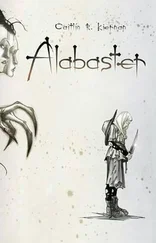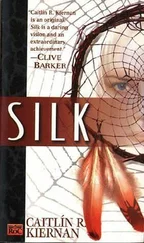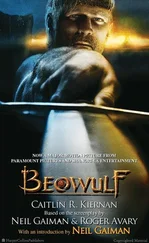Caitlin R. Kiernan - The Red Tree
Здесь есть возможность читать онлайн «Caitlin R. Kiernan - The Red Tree» весь текст электронной книги совершенно бесплатно (целиком полную версию без сокращений). В некоторых случаях можно слушать аудио, скачать через торрент в формате fb2 и присутствует краткое содержание. Жанр: Ужасы и Мистика, на английском языке. Описание произведения, (предисловие) а так же отзывы посетителей доступны на портале библиотеки ЛибКат.
- Название:The Red Tree
- Автор:
- Жанр:
- Год:неизвестен
- ISBN:нет данных
- Рейтинг книги:3 / 5. Голосов: 1
-
Избранное:Добавить в избранное
- Отзывы:
-
Ваша оценка:
- 60
- 1
- 2
- 3
- 4
- 5
The Red Tree: краткое содержание, описание и аннотация
Предлагаем к чтению аннотацию, описание, краткое содержание или предисловие (зависит от того, что написал сам автор книги «The Red Tree»). Если вы не нашли необходимую информацию о книге — напишите в комментариях, мы постараемся отыскать её.
The Red Tree — читать онлайн бесплатно полную книгу (весь текст) целиком
Ниже представлен текст книги, разбитый по страницам. Система сохранения места последней прочитанной страницы, позволяет с удобством читать онлайн бесплатно книгу «The Red Tree», без необходимости каждый раз заново искать на чём Вы остановились. Поставьте закладку, и сможете в любой момент перейти на страницу, на которой закончили чтение.
Интервал:
Закладка:
So far, I’ve hardly seen Constance today. She came down for breakfast. And she walked with me to the mailbox. But that’s pretty much it. Whatever she’s doing in the attic, at least she’s returned to doing it more or less quietly. On the way back to the house, I brought up her “coyote” sightings again, though I didn’t tell her I’d had a nightmare because of them. Unlike yesterday, she seemed oddly reluctant to talk about the matter, almost as if, in the interim, she’d thought better of having mentioned it at all.
“If there are coyotes around, doesn’t it seem odd that we never hear them?” I asked. “I’ve always gotten the impression they’re pretty noisy animals.”
Constance shrugged and sorted through the day’s junk mail. “It might have only been a stray dog,” she said. “There must be lots of feral dogs about. Maybe a stray German shepherd or something like that.”
“Maybe,” I said, and didn’t press the issue, as it does seem perfectly reasonable that someone could mistake a feral German shepherd for a coyote.
As for the nightmare, I might just as well blame Harvey’s manuscript as Constance’s coyote. I didn’t go to bed last night when I was done at the typewriter. I sat in the living room a while, trying to concentrate on a DVD — Deborah Kerr and Jean Simmons in Black Narcissus (1947). It’s one of my favorites, has been for ages, but I couldn’t stop thinking about Harvey’s manuscript in its cardboard box. So I ended up in the kitchen again, flipping through the pages in search of the account of William and Susan Ames (if only the thing had an index). Turns out, it was way back in the first chapter, right there in the first few pages. But Harvey returns to the subject later, and on page 173 proceeds from numerous retellings and embellishments of the Ames legend to the subject of ghostly dogs and purported cases of lycanthropy in Rhode Island and Massachusetts. His writing here is somewhat less focused than usual, and I’m assuming that, like most of the book, he must have meant this only as a rough first draft:
Traditions of spectral canines of the sort best known from the British Isles are, as it happens, not alien to the States. Indeed, I have assembled numerous examples from various parts of New England. Though hardly as well known as the Barghest of Yorkshire or dreadful Black Shuck of East Anglia, there is, for instance, central Connecticut’s “Black Dog of West Peak.” Like many of its ilk, the appearance of this “black dog” is said to be an omen. Indeed, there is even a folk rhyme devoted to the animal’s seeming ability to bestow good luck or ill upon those who happen to catch of glimpse of it: “If a man shall meet the Black Dog once, it shall be for joy; and if twice, it shall be for sorrow; and the third time, he shall die.”
Though often sighted, the dog that haunts the steep volcanic Hanging Hills south of Meriden is said to leave no tracks and to utter a silent howl. The most oft-recounted tale associated with this apparition concerns the fate of one W. H. C. Pynchon, a geologist from Manhattan who frequently made excursions to the area to study its igneous rock formations. The April-June 1898 issue of The Connecticut Quarterly includes the definitive account of Pynchon’s three encounters with the beast, which, as the rhyme dictates, ends with his death (though, in actuality, the geologist did not perish in the Hanging Hills at the end of the Nineteenth Century, but died peacefully on Long Island in 1910).
Closer to home, there is Rhode Island’s own “phantom dog of Fort Wetherill” in Jamestown. Less renowned, perhaps, than its cousin to the west, sightings of this dog are also reputed to portend doom. In Tiverton, there are reports of a “pitch-black dog” that has been seen to transform itself into the figure of a woman, who then proceeds to play a violin before vanishing. Similarly, though less musically inclined, is the shape-shifting black dog of Newport, which also transforms itself into a woman who is given to peering in through windows.
That last detail is reminiscent of the famous Bête du Gévaudan, an unidentified wolflike animal that terrorized the peasantry of France’s Margeride Mountains from 1764 until at least 1767, slaughtering as many as one hundred and thirteen people.La bête was also alleged to have possessed shape-shifting abilities, and some of the reports indicate that, like the Newport lycanthrope, it was fond of gazing in through windows. Similarly, there are reports of a huge animal, suspected of being a werewolf, that is said to have wrecked a coach and laid waste to a farm east of Gresford in northern Wales in 1791, and to have stood up on its hind legs “like a human being” to gaze in through the windows of the farmhouse. The creature was said to have had blue eyes.
Yeah, I know. Precisely the sort of shit I needed to be reading before bed. Anyway, Harvey eventually finds his way back to the red oak and the strange happenings here at the “old Wight place”:
We see an element of the lycanthropic associated with the property, beginning with the death of Mr. and Mrs. Ames. The latter, you will recall, was said by her distraught husband to have been witnessed walking in the company of “a great wild beast,” though he also seems to have been of the opinion that it was nothing so mundane as either a wolf or panther. I will assume he also ruled out bears. A contemporary account of the affair, from the Providence Journal(“Horror from Moosup Valley,” October 2, 1840), even mentions that Ames had repeatedly looked up to find the face of Susan watching him from one of the windows, and that, on one occasion, William saw both the woman and her bestial attendant staring in at him.
During my research, I have assembled more than a dozen additional tales from the Moosup Valley/Coventry region featuring wolflike creatures, and oftenwere wolflike creatures. Many of these encounters are reputed to have taken place on the farm, usually within sight of the red oak, though a fair number come from what is now the George B. Parker Woodland Wildlife Refuge in Coventry. I will begin this catalog of lupine oddities with those sightings from the Parker Woodland.
This 860-acre tract of land is located along the northern side of Maple Valley Road, about 250 yards east of the intersection of Route 102 (Victoria Highway), about ten miles from Providence. The tract has something of a reputation as a “ghost town,” as the woods are dotted with evidence of Colonial-era agriculture, including a multitude of fieldstone walls, foundations, wells, rock-wall pens that once held livestock, and the stone foundations of numerous buildings. In 1760, a dam was built on Turkey Meadow Creek, north of Maple Valley Road, and two abandoned stone quarries likely date from roughly the same period. Remains of a sawmill (ca 1760–1785) can be seen at the brook. The lion’s share of this land was part of the Shawomet Purchase (1642), and was then obtained by the Waterman family in 1672. After almost a century, the Watermans sold the land to Caleb Vaughn in 1760. Probably, the most celebrated structure here is the meager remnants of the Isaac Bowen House, a center chimney that was added to the National Register of Historic Places in 1980. Much has been made of the low stone cairns that are situated between Turkey Meadow Brook and Biscuit Hill Road (to the north), and the usual bevy of wild assertions have been made as to their possible origin, everything from Phoenician to Celtic settlers (and stranger things, as we’ll soon see). In truth, they are likely only the remains of furnaces used in the Eighteenth and Nineteenth centuries to produce large quantities of charcoal, and rock piles made by Colonial settlers and the Narragansett Indians before them. One marvels at the constant invocation of Celts, Vikings, and other European races as an explanation for the creation of such cairns, as though Native Americans lacked the know-how to simply stack stones.
Читать дальшеИнтервал:
Закладка:
Похожие книги на «The Red Tree»
Представляем Вашему вниманию похожие книги на «The Red Tree» списком для выбора. Мы отобрали схожую по названию и смыслу литературу в надежде предоставить читателям больше вариантов отыскать новые, интересные, ещё непрочитанные произведения.
Обсуждение, отзывы о книге «The Red Tree» и просто собственные мнения читателей. Оставьте ваши комментарии, напишите, что Вы думаете о произведении, его смысле или главных героях. Укажите что конкретно понравилось, а что нет, и почему Вы так считаете.












